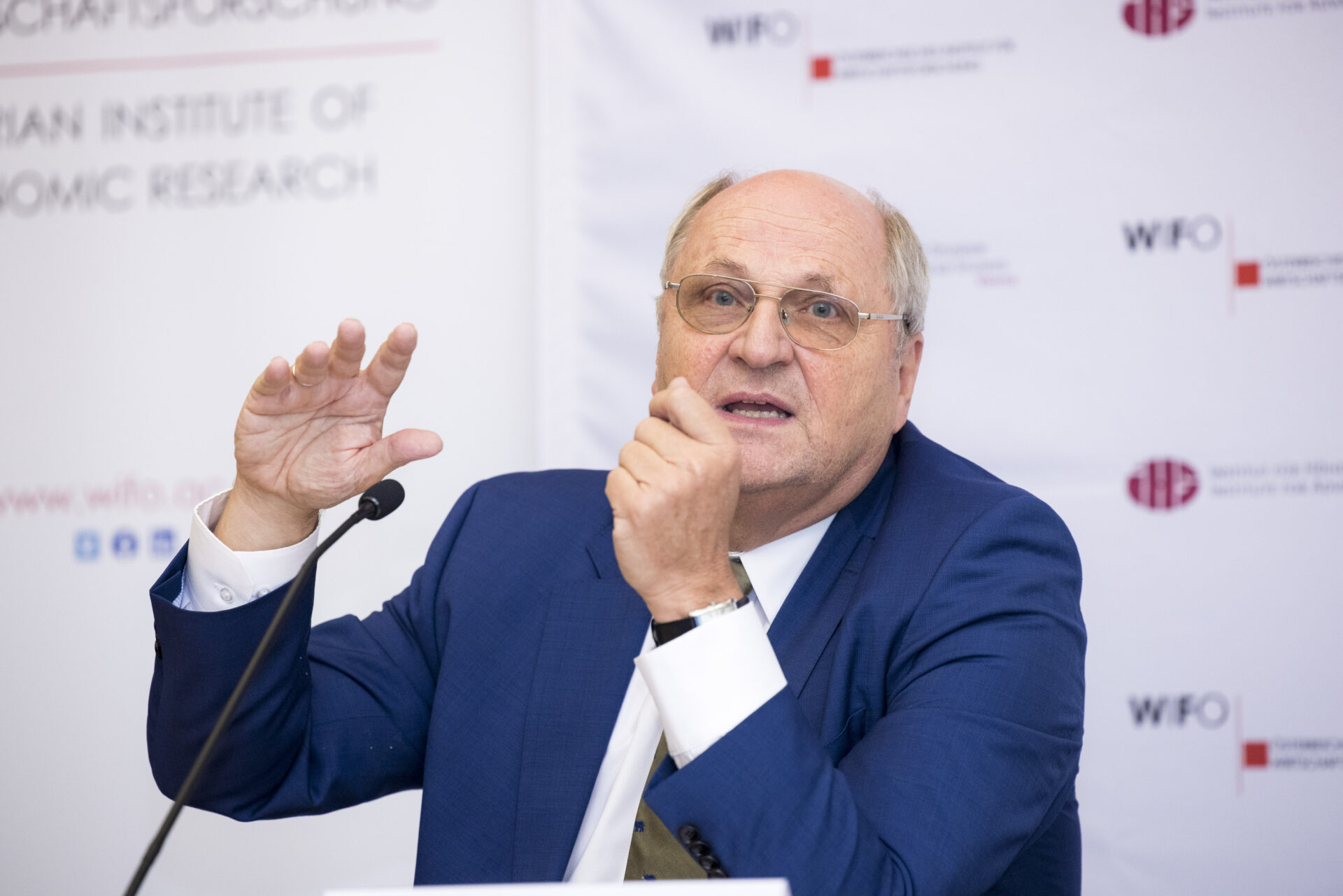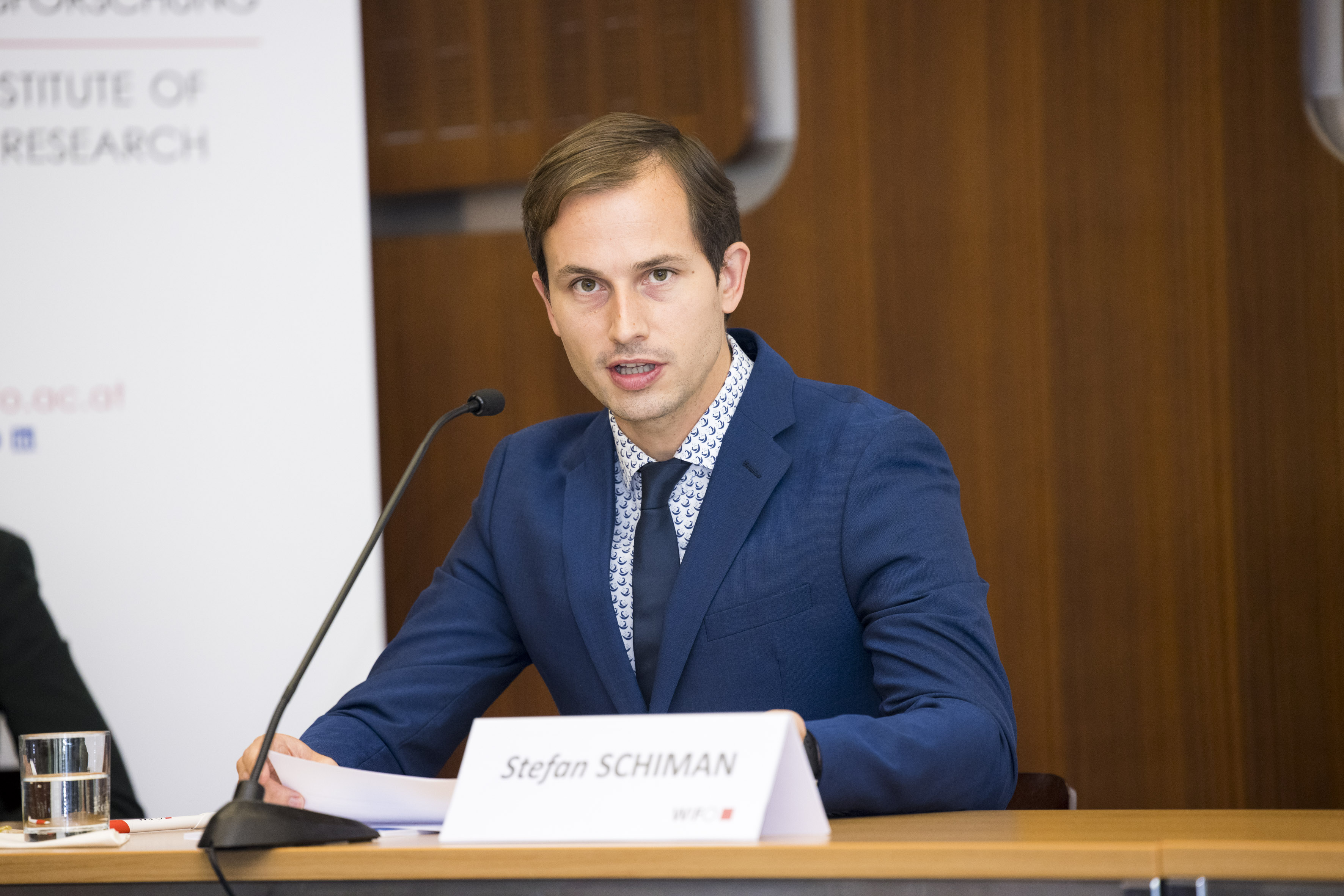
Economic Outlook for 2020 to 2022
In the summer of 2020, economic recovery in Austria was extraordinarily strong, even by international standards. The second lockdown depresses economic activity again in 2020, but – since industry is less affected – by less than the first. Upcoming winter tourism in particular will be severely curtailed due to the ongoing travel warnings, or even fully cancelled. Only in the warmer season and with the vaccination coverage of the population can social and economic activities return to normal. In any case, unemployment will remain above the pre-crisis level in 2022.
"Due to ongoing travel warnings, the catering and hotel industry – the sectors with the highest losses so far – will recover only slowly. They would be particularly affected by a third lockdown," says Stefan Schiman, author of the current WIFO forecast.
 © Johannes Brunnbauer
© Johannes Brunnbauer
Economic output slumped sharply in Austria in 2020. However, at –7.3 percent (forecast), the decline in GDP was less severe than the circumstances of the last few weeks – the lockdown since the beginning of November in varying intensity – would have suggested. In its forecast from early October, WIFO already expected a decline of 6.8 percent. The relatively low forecast revision for 2020 has two main causes:
-
The recovery was stronger than expected in the summer and, measured against the depth of the previous slump, was also above average by international standards. In addition to the generous easing of the COVID-19 pandemic containment measures, the strong rebound was also due to expansionary economic policies, which stabilised private household incomes and thus consumer demand, as well as the rapid recovery of world trade, which benefited foreign trade and subsequently industrial production and investment.
-
The solid development of world trade also explains why the economy is less affected by the second lockdown since November 2020 than by the first. International supply chains have been maintained, factories have not been closed and supply-side barriers to industrial production have been avoided. The second lockdown mainly affects the service industries and therefore has less macroeconomic effects than the first one.
Under the current conditions, the mean of the forecast interval will – contrary to the usual assumption – not correspond to the value with the highest probability of occurrence. Rather, a bimodal forecast interval seems plausible, i.e. a range with two probable outcomes: either the health policy stance remains unchanged ("no policy change"), and a recovery from the current lockdown follows in the first quarter of 2021. Or a new lockdown is imposed in the first quarter, so that a – relatively stronger – rebound is deferred to the second quarter:
-
In the "third lockdown" scenario, a complete lockdown of four weeks is assumed from the end of January 2021 and a subsequent partial lockdown until the end of March 2021 with continued closure of restaurants and accommodation services. GDP would thus continue to decline in the first quarter of 2021 and the economic recovery would be delayed. With the closure of retail trade, the use of COVID-19 short-time work would increase again, while the abrupt end of the winter tourism season would temporarily increase seasonal unemployment.
-
In the "no policy change" scenario without a third lockdown, a jump in economic output could be expected in the first quarter of 2021, as businesses that had to close for several weeks at the end of 2020 would be active again. This would affect the retail sector, although some catch-up purchases would already be made before Christmas, as well as the catering sector and, to a lesser extent, the accommodation sector. Accommodation businesses would only compensate the losses very slowly, as travel warnings issued by important countries of origin will keep foreign guests from holidaying in Austria until including February 2021. The rebound after the second lockdown would therefore be weaker than after the first or a possible third.
In the course of 2021, first the rising outdoor temperatures and, at the latest in the second half of the year, the vaccination coverage of the population should again allow more societal and thus economic activities and enable a return to normal social behaviour, thereby supporting the economic recovery. Based on this assumption, a GDP growth rate of 4.5 percent is forecast for 2021 in the "no policy change" scenario and 2.5 percent in the "third lockdown" scenario. The losses in value added due to the crisis will not be compensated in either scenario until 2022. The unemployment rate, which rose by 2.5 percentage points to 9.9 percent in 2020 despite widespread use of COVID-19 short-time work, will fall to 9.3 percent in 2021 in both scenarios. The budget deficit is expected to decline from around 10 percent of GDP in 2021 to about 5.5 percent ("no policy change" scenario) and 6.2 percent ("third lockdown" scenario), respectively.
























